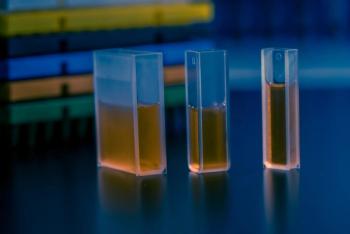
- Pharmaceutical Technology's In the Lab eNewsletter, November 2023
- Volume 18
- Issue 11
Using Glycobiology to Study the Nuances of Immune Cells
Capturing the nuances of immune cell phenotype and function can be achieved using glycosylation analysis.
In the continued quest for truly personalized medicine, biomarker discovery has expanded far beyond genomics and proteomics. Scientists are increasingly interested in glycans, the carbohydrates that link to proteins and lipids in a process known as glycosylation. Glycosylation is a fundamental regulator of countless biological activities, including immune cell function in health and disease. Research seeking to characterize dysregulated glycosylation and its effects on immune regulation will be vital to the development of new diagnostics and therapeutics. Despite progress in recent years, research has only begun to scratch the surface of this broad topic.
Glycosylation analysis can provide a deeper and more nuanced understanding of immune cell function, going beyond typical biomarkers to establish more detailed phenotypic subcategories of B and T cells and offer insight into disease etiology and progression. The continued study of immune cell glycosylation will undoubtedly drive progress in the identification of methods for early detection and characterization of disease states. However, further advances in analytical technology will be instrumental in helping this field reach its full potential.
Learning from the glycome
The diverse assortment of cell surface glycans, known collectively as the glycome, offers a rich and dynamic tapestry of insights into biological processes. Glycosylation is a ubiquitous post-translational modification (PTM), with approximately 50–70% of all proteins bearing glycans (1). As cell types, including immune cells, become more extensively characterized and subdivided into categories based on biomarkers, glycosylation status has become an increasingly important variable within these analyses. Glycosylation is incredibly dynamic—unlike proteins, the structures of glycans are not coded by a set genetic template. Rather, it is regulated by the milieu of enzymes surrounding the glycoform, meaning that the population of glycans found on any given cell is highly diverse and constantly changing (2). This dynamic diversity, coupled with the powerful role of glycans in regulating downstream functions, means that the glycosylation profile of a cell may provide a deeper insight into real-time functionality than biomarker expression can.
Interactions between glycans and glycan-binding proteins play a vital role in controlling and fine-tuning immune cell development, activation, and function. For example, the presence of specific O-glycan modifications to P-selectin binding ligands dictates the migration of T cell precursors to the thymus. Further glycosylation also mediates the maturation of thymocytes into CD4+ and CD8+ T cells (3). O-glycan remodeling is also an important feature of B cell development, such that distinct glycoforms can serve as markers of different phases of differentiation (4).
The glycan signatures on healthy, dysregulated, or malignant cells, as well as those on pathogens, serve as signals for immune recognition of “self” vs. “other.” The glycome is thus indispensable in regulating immunity vs. tolerance. Changes in immune cell glycosylation are a useful indicator of the cells’ activity throughout cell differentiation, activation, and apoptosis that can be used to characterize subsets of B and T cells in various disease states. These alterations have been associated with various immune cell functions, such as immune cell trafficking, antigen and cytokine receptor activation, cellular signaling, and more.
For example, glycosylation plays a key role in modulating tumor immunogenicity and immune evasion. Tumor cells secrete galectins that can bind to glycans present on effector T cells and attenuate their activity, leading to an immunosuppressive effect. Specific tumor-associated galectins restrain T cell activation, limit cytokine production, or even induce apoptosis (5). Growing evidence also implicates dysregulated glycosylation in autoimmunity. One study examined B cell markers in samples from individuals with primary Sjögren’s syndrome and systemic lupus erythematosus, two chronic autoimmune conditions (6). Researchers discovered notable changes in glycosylation within specific B cell subsets that were altered in both diseases, as well as similar alterations in certain serum immunoglobulins. These and other findings suggest that any dysfunction in normal B and T cell glycosylation can result in the development of pathogenic autoinflammation and contribute to a general perturbation of immune system homeostasis (7).
Immune cell glycan profiling
Flow cytometry
Lectin-based flow cytometry is among the most important tools for profiling glycosylation in heterogeneous cell populations. Using fluorophore-conjugated lectins that bind to specific glycan structures, researchers can analyze and quantify glycans present throughout a sample of cells in suspension. Flow cytometry offers a number of advantages that make it ideal for profiling immune cell glycosylation, including its high throughput. Researchers can quickly analyze hundreds of thousands of cells for multiple glycan biomarkers within phenotypic subsets identified by more traditional surface markers. Flow cytometry is ideal for assessing liquid samples such as serum; cells extracted from tissue samples such as the thymus, spleen, and lymph nodes; or bone marrow. However, the nature of the flow cytometry method precludes the ability to gain useful spatial information about the distribution of glycans in solid tumors or tissues using this method alone.
Nonetheless, using flow cytometry to profile glycosylation can still help healthcare providers and researchers characterize important immune mechanisms in hematological malignancies. An example of the utility of flow cytometry was shown in a 2023 study that assessed glycan markers on leukocytes in patients with myelodysplastic neoplasms (MDS) (8). MDS are age-related disorders of white blood cell overproliferation, the course of which can range from relatively benign conditions to acute myeloid leukemia (AML). In the study, the researchers identified distinct glycosylation profiles associated with cell maturation and lineage differentiation. They also characterized unique cellular glycosignatures associated with disease course, differentiating low-risk MDS from AML. These findings suggest that lectin-based flow cytometry of leukocytes could be used to identify distinct glycosylation profiles for MDS risk stratification.
Liquid chromatography/mass spectrometry
Liquid chromatography and mass spectrometry are two methods used separately and in tandem to characterize glycans on a more specific level. Liquid chromatography separates distinct compounds contained within a liquid sample by running it through a solid column. The different components within the sample are then separated based on their speed passing through the column. Mass spectrometry measures the mass-to-charge ratio of ions in an analyte of interest to create a mass spectrum that can be used to determine the mass or chemical composition of the analytes.
When used together, liquid chromatography–mass spectrometry (LC–MS) allows researchers to separate and identify the components of a complex biological mixture. This combination is particularly useful in instances where liquid chromatography would not provide sufficient resolution or when analyte masses would overlap when assessed with mass spectrometry alone. Liquid chromatography, mass spectrometry, and LC–MS are valuable methods for profiling immune cell glycosylation in many applications.
Researchers have leveraged liquid chromatography and mass spectrometry to examine the relationship between immunoglobulin glycosylation status and aging, cancer, autoimmune disorders, and more. A 2020 study of inflammatory biomarkers in multiple sclerosis used hydrophilic interaction liquid chromatography with mass spectrometry to characterize glycans on immunoglobulin G (IgG) (9). When comparing serum IgG from multiple sclerosis patients to age- and sex-matched controls, the researchers identified significant differences in four of 24 measured IgG glycan traits. Additionally, the specific structural alterations observed in IgG glycans were associated with increased proinflammatory potential, suggesting the utility of glycomic changes as possible biomarkers in multiple sclerosis. The results of this study illustrate the ability of LC–MS to provide detailed structural information about glycans in a sample.
Lectin microarrays
Another approach to simultaneously analyzing multiple glycan biomarkers is through lectin microarrays, which use a panel of assorted lectins immobilized on a substrate. By incubating a fluorescently tagged liquid sample with the panel, researchers can use fluorescence detection to assess binding events and thus characterize the glycans present in the sample. Lectin microarrays offer a number of benefits, including relative technical simplicity and high specificity for glycoforms. Additionally, while LC–MS analysis often requires the chemical or enzymatic release of glycans from associated proteins, lectin microarrays can be used to study intact glycans without a demanding sample preparation process (10). However, this method is not quantitative and precludes the complete determination of glycan structures allowed by mass spectrometry.
Lectin microarrays are utilized in a variety of research applications, including biomarker discovery. They are especially promising for studies of immune cell glycosylation, as they allow researchers to observe lectin binding to intact glycoforms rather than separated glycans. For example, one study leveraged lectin microarrays to identify changes in serum immunoglobulin glycosylation in hepatocellular carcinoma (11). Researchers used these findings to construct a model that could distinguish diagnostic markers of hepatocellular carcinoma from other hepatic diseases and healthy controls, potentially improving diagnostic accuracy for the disease.
Pressing ahead in glycomics research
While glycomics research has gained momentum in recent years, the field still has a way to go in developing tools and methods for fully characterizing and understanding the implications of glycosylation in health and disease. Several well-established approaches are available to characterize glycans present within a sample or on a specific subset of cells. However, most current methods preclude a higher level of resolution that can identify distinct glycans on specific proteins. Advances in methods such as proximity labeling, which can identify biomolecules close to a protein of interest, are beginning to surmount these limitations. Researchers can tag glycan-protein interactions present on cells for later enrichment and analysis using mass spectrometry-based proteomics. Proximity labeling can also be used in conjunction with flow cytometry to characterize select glycan–protein interactions on intact cells (12).
Further innovation and research are needed to establish a more complete understanding of protein-specific glycosylation patterns. As technological developments continue to expand scientists’ understanding of the role of cell- and protein-specific glycosylation in health and disease, these discoveries could be leveraged to identify more precise and relevant biomarkers and therapies than ever before.
References
1. Apweiler, R.; Hermjakob, H.; Sharon, N. On the Frequency of Protein Glycosylation, as Deduced from Analysis of the SWISS-PROT Database. Biochimica et Biophysica Acta (BBA)-General Subjects 1999, 1473 (1), 4–8. DOI: 10.1016/S0304-4165(99)00165-8
2. An, H. J.; Froehlich, J. W.; Lebrilla, C. Determination of Glycosylation Sites and Site-Specific Heterogeneity in Glycoproteins. Curr. Opin. Chem. Biol. 2009, 13 (4), 421–426.
3. De Bousser, E.; Meuris, L.; Callewaert, N.; Festjens, N. Human T-cell Glycosylation and Implications on Immune Therapy for Cancer. Hum. Vaccines Immunother. 2020, 16 (10), 2374–2388. DOI: 10.1080/21645515.2020.1730658
4. Giovannone, N.; Antonopoulos, A.; Liang, J.; et al. Human B Cell Differentiation Is Characterized by Progressive Remodeling of O-Linked Glycans. Front. Immunol. 2018, 9, 2857. DOI: 10.3389/fimmu.2018.02857
5. Nardy, A. F.; Freire-de-Lima, L.; Freire-de-Lima, C. G.; Morrot, A. The Sweet Side of Immune Evasion: Role of Glycans in the Mechanisms of Cancer Progression. Front. Oncol. 2016, 6, 54. DOI: 10.3389/fonc.2016.00054
6. Morel, M.; Pochard, P.; Echchih, W.; et al. Abnormal B Cell Glycosylation in Autoimmunity: A New Potential Treatment Strategy. Front. Immunol. 2022, 13, 975963. DOI: 10.3389/fimmu.2022.975963
7. Ramos-Martínez, I.; Ramos-Martínez, E.; Cerbón, M.; et al. The Role of B Cell and T Cell Glycosylation in Systemic Lupus Erythematosus. Int. J. Mol. Sci. 2023, 24 (1), 863. DOI: 10.3390/ijms24010863
8. van Spronsen, M. F.; Horrevorts, S.; Cali, C.; et al. Dysregulation of Developmental and Cell Type-Specific Expression of Glycoconjugates on Hematopoietic Cells: A New Characteristic of Myelodysplastic Neoplasms (MDS). Leukemia 2023, 37 (3), 702–707. DOI: 10.1038/s41375-022-01784-x
9. Cvetko, A.; Kifer, D.; Gornik, O.; et al. Glycosylation Alterations in Multiple Sclerosis Show Increased Proinflammatory Potential. Biomedicines 2020, 8 (10), 410. DOI: 10.3390/biomedicines8100410
10. Dang, K.; Zhang, W.; Jiang, S.; Lin, X.; Qian, A. Application of Lectin Microarrays for Biomarker Discovery. ChemistryOpen 2020, 9 (3), 285–300. DOI: 10.1002/open.201900326
11. Zhang, Y.; Zhang, S.; Liu, J.; et al. Identification of Serum Glycobiomarkers for Hepatocellular Carcinoma Using Lectin Microarrays. Front. Immunol. 2022, 13, 973993. DOI: 10.3389/fimmu.2022.973993
12. Vilen, Z.; Joeh, E.; Critcher, M.; Parker, C. G.; Huang, M. L. Proximity Tagging Identifies the Glycan-Mediated Glycoprotein Interactors of Galectin-1 in Muscle Stem Cells. ACS Chem. Biol. 2021, 16 (10), 1994–2003. DOI: 10.1021/acschembio.1c00313.
About the author
Pamela James, PhD, is vice-president, Product, Vector Laboratories.
Articles in this issue
about 2 years ago
Exploring Advances in Twin-Screw Extrusion for Solid-Dosage Drugsabout 2 years ago
Winners of the 2023 CPHI Pharma Awards Announcedabout 2 years ago
Bettersize Unveils New Capabilities at AAPS 2023 PharmSci 360about 2 years ago
Waters Launches New Oligonucleotide Bioanalysis Kitsabout 2 years ago
SCHOTT Launches ViewCell Flow Cell for Biopharma Process Controlabout 2 years ago
Salipro Biotech and Icosagen to Collaborate on Antibody DiscoveryNewsletter
Get the essential updates shaping the future of pharma manufacturing and compliance—subscribe today to Pharmaceutical Technology and never miss a breakthrough.




